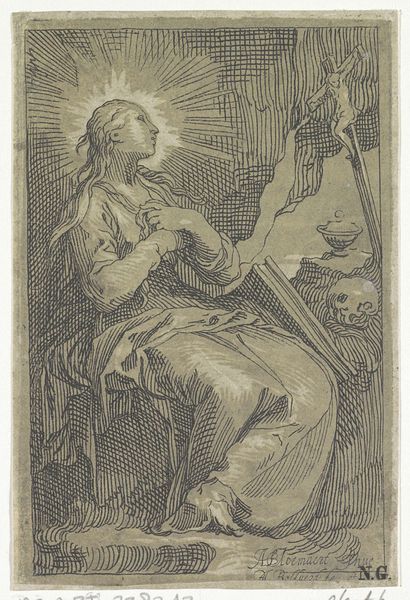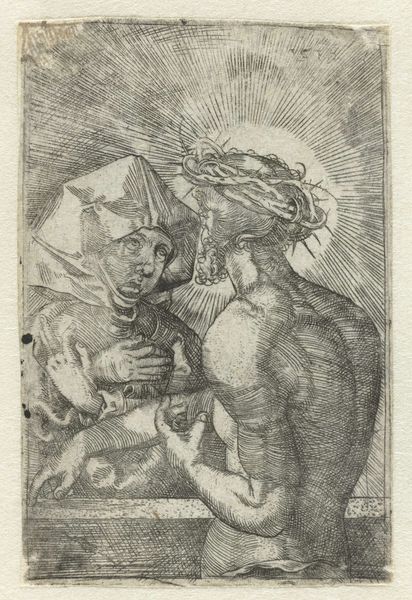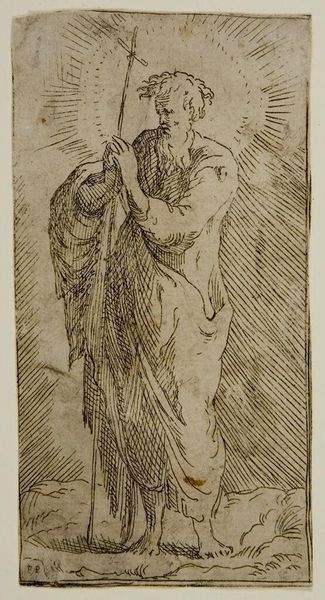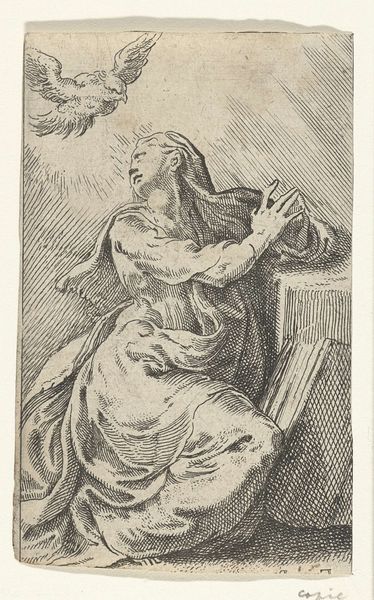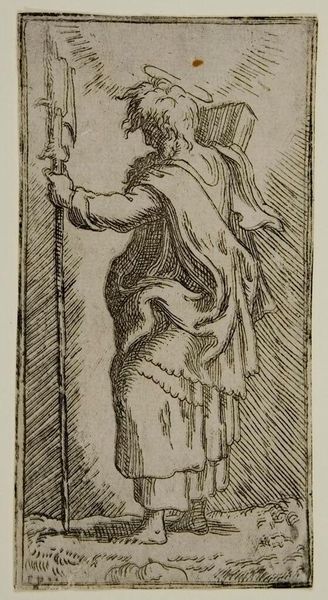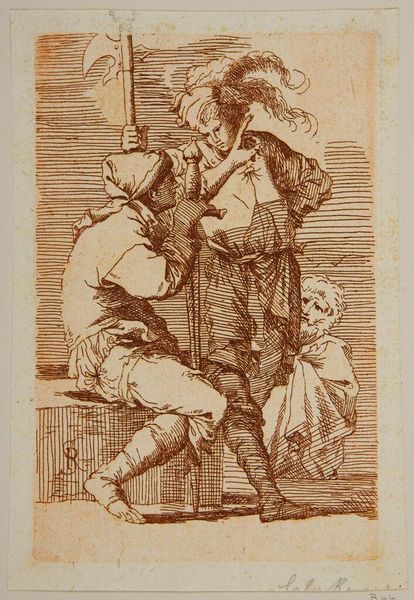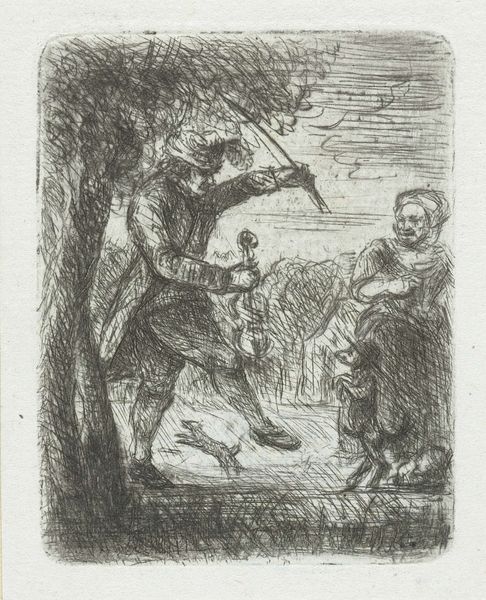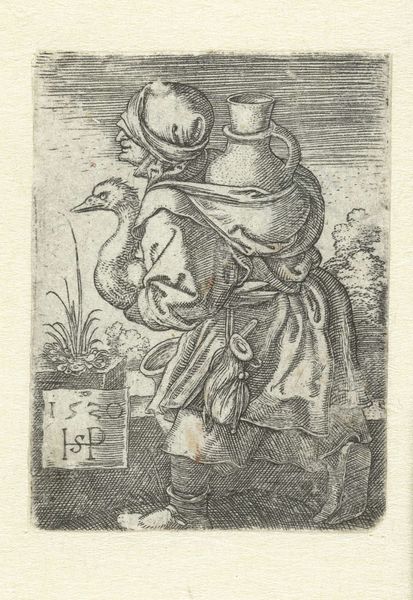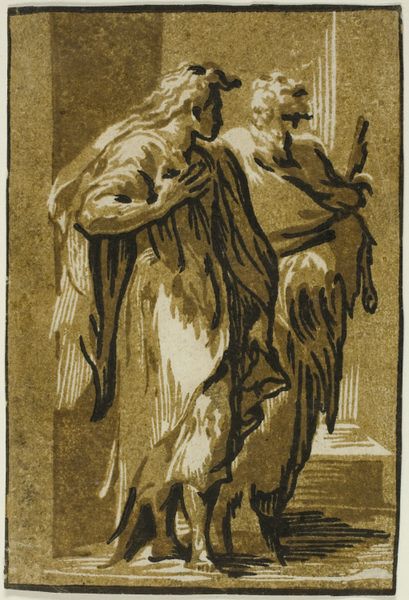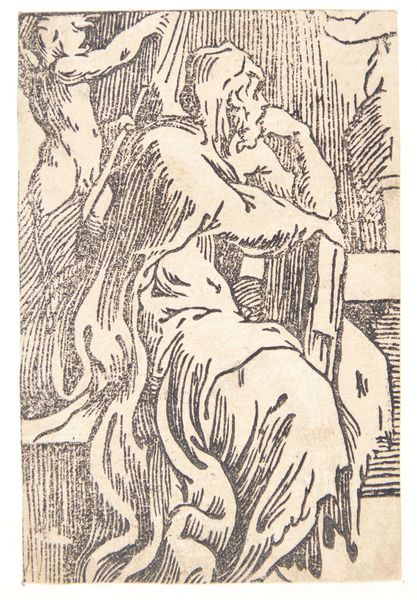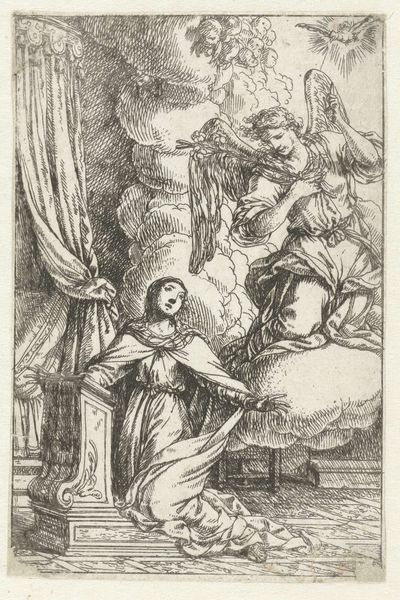
Boetvaardige Maria Magdalena in de grot voor crucifix c. 1610 - 1615
0:00
0:00
print, intaglio, engraving
#
allegory
#
baroque
# print
#
intaglio
#
figuration
#
linocut print
#
line
#
history-painting
#
engraving
Dimensions: height 142 mm, width 95 mm
Copyright: Rijks Museum: Open Domain
Curator: Here we have Boëtius Adamsz. Bolswert’s engraving, "Penitent Mary Magdalene in the Cave before a Crucifix," created sometime between 1610 and 1615. Editor: Immediately, the dramatic lighting and her anguished expression strike me. It’s like a captured moment of profound personal struggle, intensified by the surrounding darkness. Curator: Indeed. The Baroque style really lends itself to that dramatic intensity. Mary Magdalene, a figure of both sin and redemption, is a powerful archetype within Christian iconography. Note the carefully arranged symbols – the skull signifying mortality, the crucifix, and her gesture of repentance, each contributing to the overarching theme of redemption. Editor: The very specific visual language constructs her repentance within a patriarchal framework. A woman, needing redemption, finding it only through suffering and adherence to the Church's structures... the cave is so stark in contrast with her bare skin! It's compelling, but the vulnerability presented feels fraught with the gaze it solicits. Curator: Consider that her bare skin might indicate an abandonment of earthly vanities, a commitment to spiritual cleansing, and even asceticism. It's crucial to remember the prevalence of religious devotion during the Baroque era; it shaped people's lives and artistic output profoundly. The cross, always, is the great and ultimate symbolic narrative in which everyone played a pre-assigned part. Editor: And within that, lies the tension. What did those pre-assigned parts dictate for women? Her assumed sin necessitates her performative penitence, doesn't it? This act echoes and upholds the power structures of that period. The skull also hints at Eve and the supposed "original sin" carried by women. Curator: Absolutely, viewing this engraving only through a modern lens diminishes its rich context. However, acknowledging potential socio-political implications opens doors for broader interpretations. The Baroque style served as a vehicle to inspire a range of emotions and this is perhaps no different. Editor: I suppose so. Considering her place in religious lore, examining how she's constantly situated, redefined, and reformed within patriarchal systems offers fascinating points for cultural analysis. Curator: Agreed. Thinking through art requires seeing beyond immediate assumptions into more resonant cultural, spiritual, and philosophical undertones. Editor: And that makes for the richest understanding. Thanks!
Comments
No comments
Be the first to comment and join the conversation on the ultimate creative platform.
